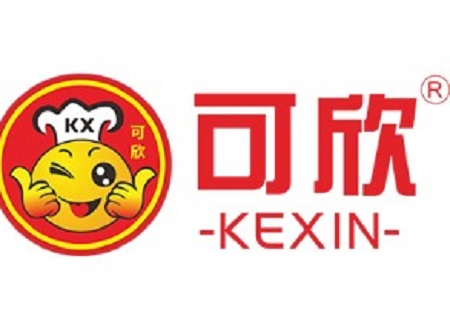
课程介绍
课程内容
专题一:骨盆带(介绍物理治疗原则和临床实践指南)
专题二:腰椎
专题三:髋关节和膝关节(步态分析)
专题四:脚踝和足部(步态分析、跑步分析)
专题五:胸腔(临床推理,疼痛原理)
专题六:颈椎
专题一:骨盆带(介绍物理治疗原则和临床实践指南)
Day 1: Introduction (What is Physical Therapy?), Impairment-based Patient Management Model, Orthopedic Guidelines and Pattern Recognition, Pelvic Pain with Mobility Deficit Pattern (Lecture 65%, Lab 35%
第一天:概述(什么是物理治疗?);基于损伤的病人管理模式;骨科指南和模式认知;伴有活动能力受限的骨盆疼 (讲课占65%,临床实践占35%)
Day 2: Pelvic Pain with Movement Coordination Impairment Pattern, Pelvic Pain with Muscle Power Deficit Pattern, Pelvic Pain with Radiating Pain Pattern (introduced only) (Lecture 40%, Lab 60%)
第二天:伴有运动协调能力损伤的骨盆疼痛,伴有肌肉力量不足的骨盆疼痛,放射性骨盆疼痛(仅介绍)(讲课40%,实操60%)
Weekend #2: The Lumbar Spine
第二周:腰椎
Day 1: Low Back Pain with Mobility Deficit Pattern, Low Back Pain with Movement Coordination Impairment Pattern (Lecture 35%, Lab 65%)
第一天:活动能力不足的下腰痛,运动协调能力损伤的下腰痛(讲课35%,实操65%)
Day 2: Low Back Pain with Movement Coordination Impairment (cont.), Low Back Pain with Referred Pain Pattern, Low Back Pain with Radiating Pain Pattern, Lumbar Spine Differential Diagnosis (Lecture 30%, Lab 70%)
第二天:伴有运动协调能力损伤的下腰痛,牵涉性下腰痛,放射性下腰痛,腰椎的特异性诊断。(讲课30%,实操70%)
Weekend #3: The Hip and Knee (Gait analysis, post-op THA, TKA)
第三周:髋关节及膝关节(步态分析,全髋关节置换术后,全膝关节置换术后)
Day 1: Gait analysis, Four Hip Patterns, Post-op THA and Hip Fracture (Lecture 50%, Lab 50%)
第一天:步态分析,四种髋关节模式,全髋关节置换术术后,髋关节骨折(讲课50%,实操50%)
Day 2: Review gait analysis, Four Knee Patterns, Post-op TKA (Lecture 35%, Lab 65%)
复习步态分析,四种膝关节模式,全膝关节置换术后(讲课35%, 实操65%)
Weekend #4: The Ankle and Foot (Gait analysis, running analysis)
第四周:足踝(步态分析,跑步分析)
Day 1: Tissue Healing Timelines, Ankle/Foot Pain with Mobility Deficits, Ankle/Foot Pain with Movement Coordination Impairment (Lecture 35%, Lab 65%)
第一天:组织愈合时间线,伴有活动能力受限的踝/足疼痛,伴有运动协调能力损伤的踝/足疼痛(讲课35%,实操65%)
Day 2: Ankle/Foot Pain with Muscle Power Deficit, Ankle/Foot Pain with Radiating Pain, Gait analysis related to ankle/foot (Lecture 30%, Lab 70%)
第二天:伴有肌肉力量不足的踝/足疼痛,踝/足的放射性疼痛,踝/足相关的步态分析
Weekend #5: The Thorax (Clinical reasoning, pain principles)
第五周:胸(临床推理,疼痛原则)
Day 1: Clinical Reasoning, Thorax Pain with Mobility Deficits (Lecture 40%, Lab 60%)
第一天:临床推理,活动能力不足的胸痛(讲课40%,实操60%)
Day 2: Sources of Musculoskeletal Spinal Pain, Proprioceptive Neurmuscular Facilitation (PNF), Explain(ing) Pain, Thoracic Spine Differential Diagnosis (Lecture 50%, Lab 50%)
第二天:脊柱骨骼肌肉疼痛的来源,本体感觉神经肌肉易化术,胸椎特异性诊断(讲课50%,实操50%)
Weekend #6: The Cervical Spine
第六周:颈椎
Day 1: Neck Pain with Mobility Deficit, Neck Pain with Headaches (Lecture 25%, Lab 75%)
第一天:活动能力受限的颈痛,伴有头疼的颈痛(讲课25%,实操75%)
Day 2: Neck Pain with Headaches (cont.), Neck Pain with Movement Coordination/Muscle Power Deficits, Neck Pain with Radiating Pain, Cervical Spine Differential Diagnosis (Lecture 40%, Lab 60%)
第二天:伴有头痛的颈痛,运动协调能力/肌肉力量不足导致的颈痛,放射性颈痛,颈椎特异性诊断(讲课40%,实操60%)
Weekend #7: The Shoulder
第7周:肩关节
Day 1: Shoulder Pain with Mobility Deficit (Adhesive Capsulitis), Shoulder Pain with Movement Coordination Impairments (Shoulder dislocation) (Lecture 35%, Lab 65%)
第一天:伴有活动能力不足的肩痛(粘连性肩关节囊炎),伴有运动协调能力损伤的肩痛(肩关节脱臼)(讲课35%,实操65%)
Day 2: Shoulder Pain with Movement Coordination Impairments (cont.), Shoulder Pain with Muscle Power Deficits (Rotator cuff syndrome), Shoulder Pain with Radiating Pain (Thoracic Outlet Syndrome) (Lecture 35%, Lab 65%)
第二天:伴有运动协调能力损伤的肩痛,肌肉力量不足导致的肩痛(肩袖综合症),放射性肩痛(胸廓出口综合症)(讲课35%,实操65%)
Weekend #8: The Elbow, Wrist and Hand (Reflective and motivational interviewing)
第八周:肘关节,腕关节及手
Day 1: Reflective Interactions/Interviewing, Four Elbow Patterns (Lecture 40%, Lab 60%)
第一天:反射性相互作用,四种肘模式(讲课40%,实操60%)
Day 2: Motivational Interviewing, Four Wrist/Hand Patterns (Lecture 40%, Lab 60%)
第二天:激发性相互作用,四种腕/手模式(讲课40%, 实操60%)



